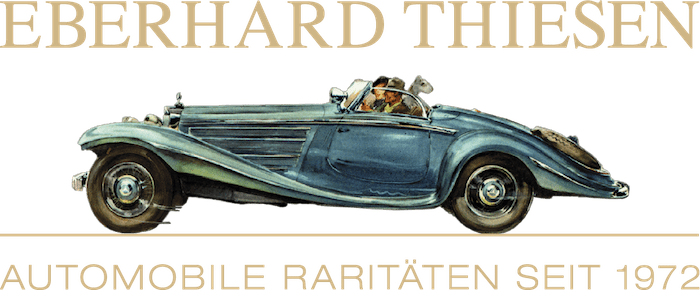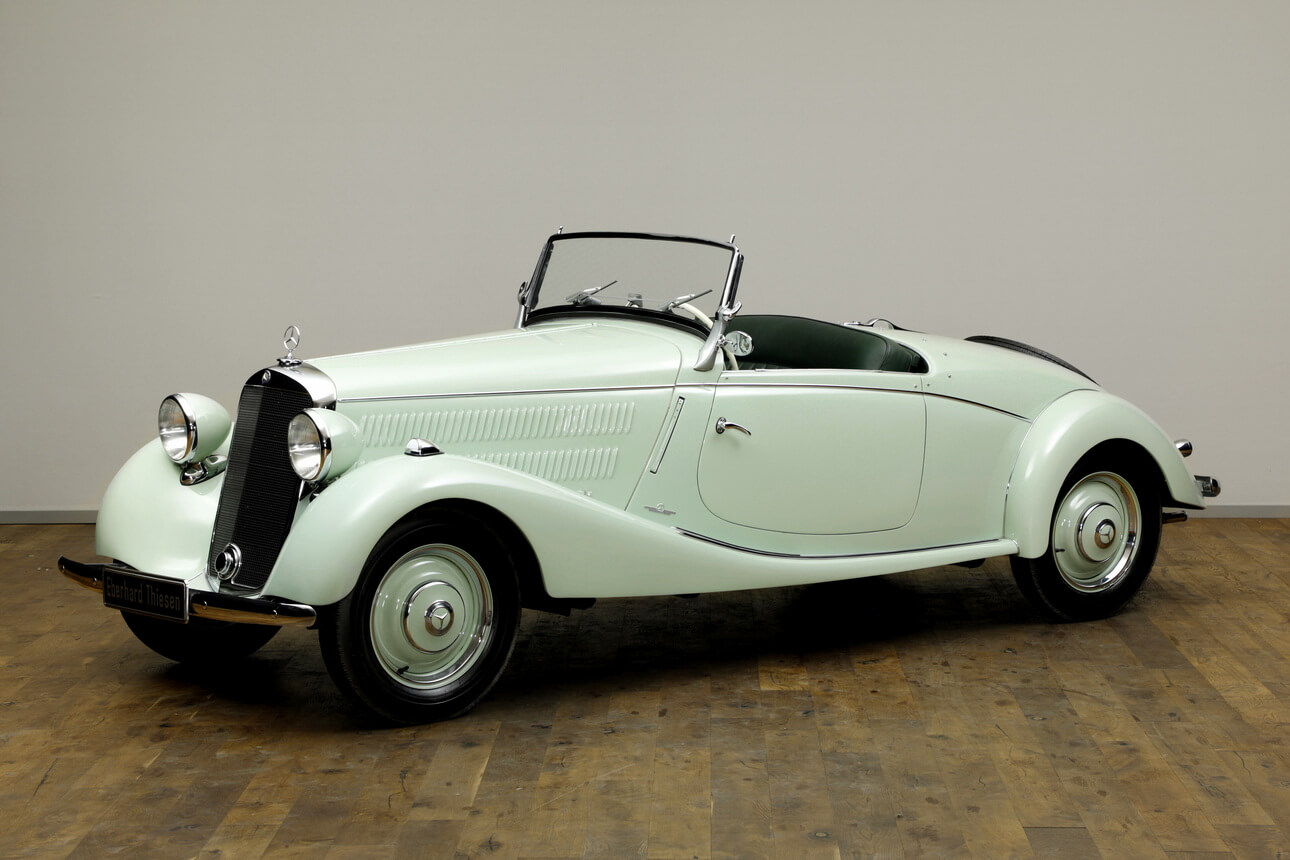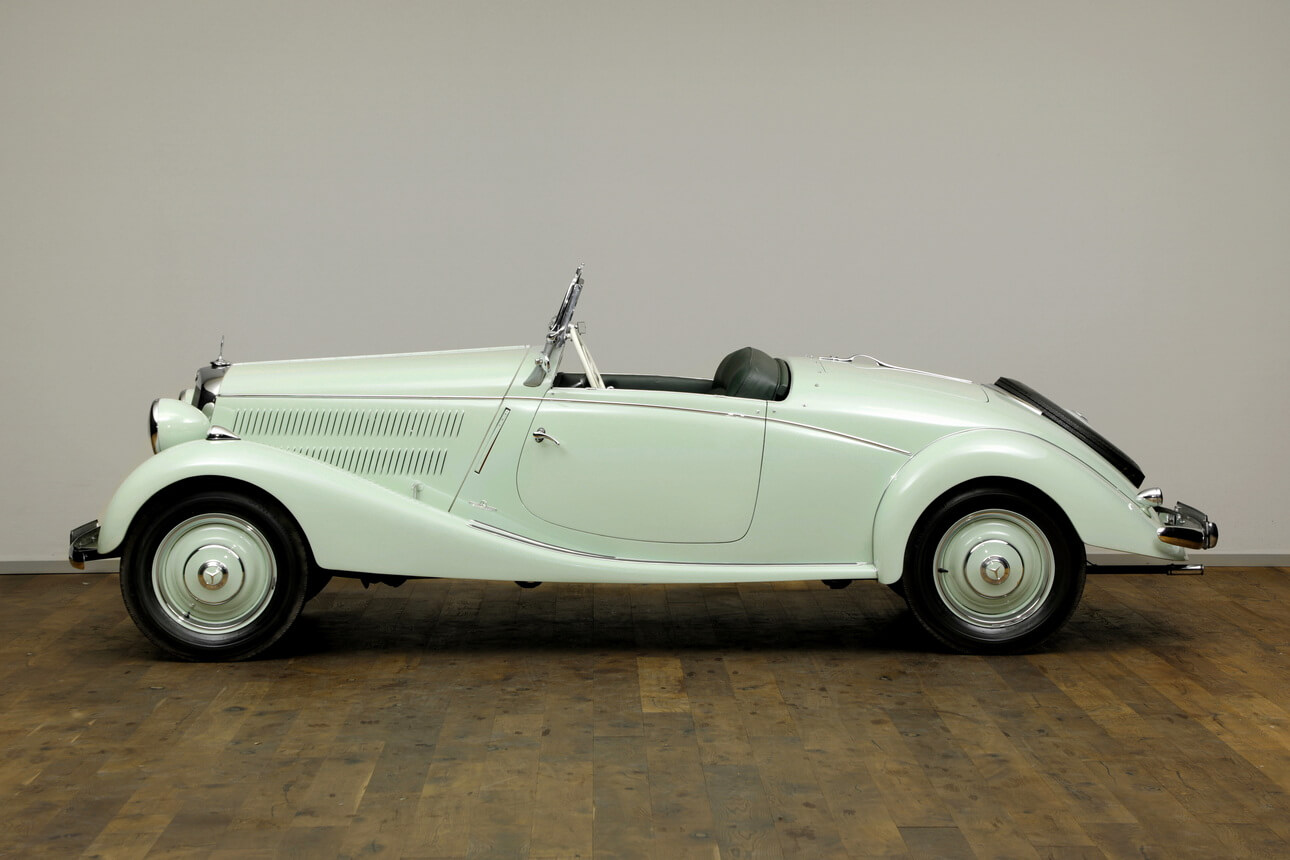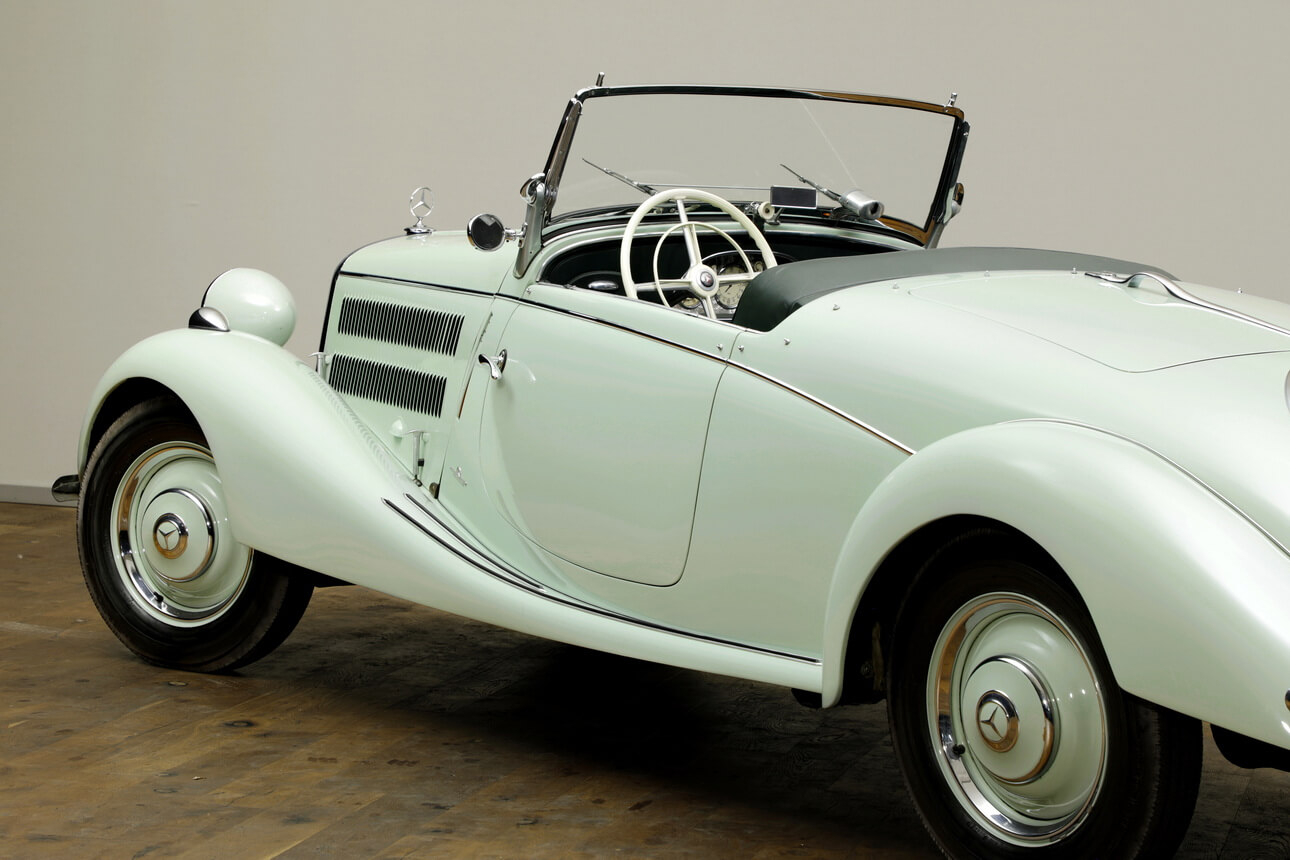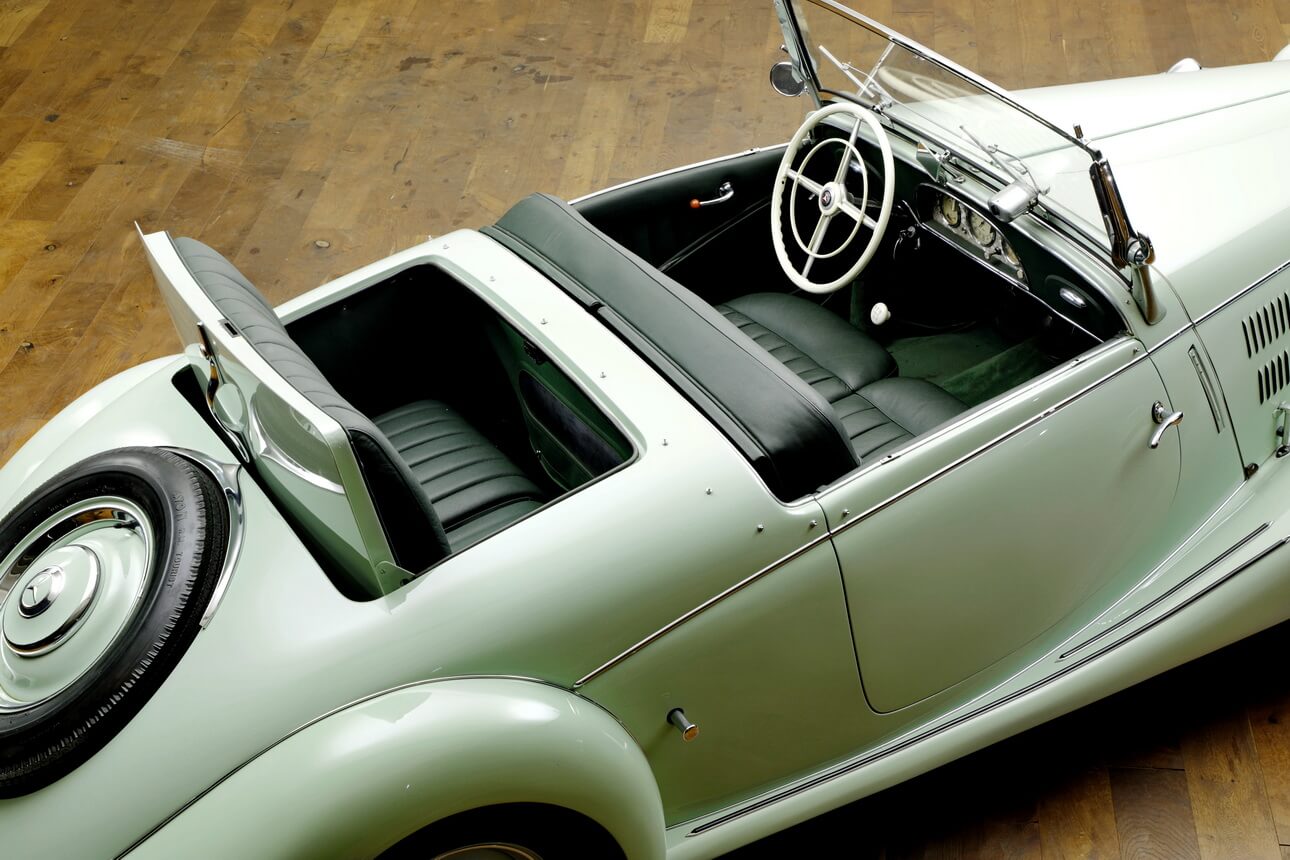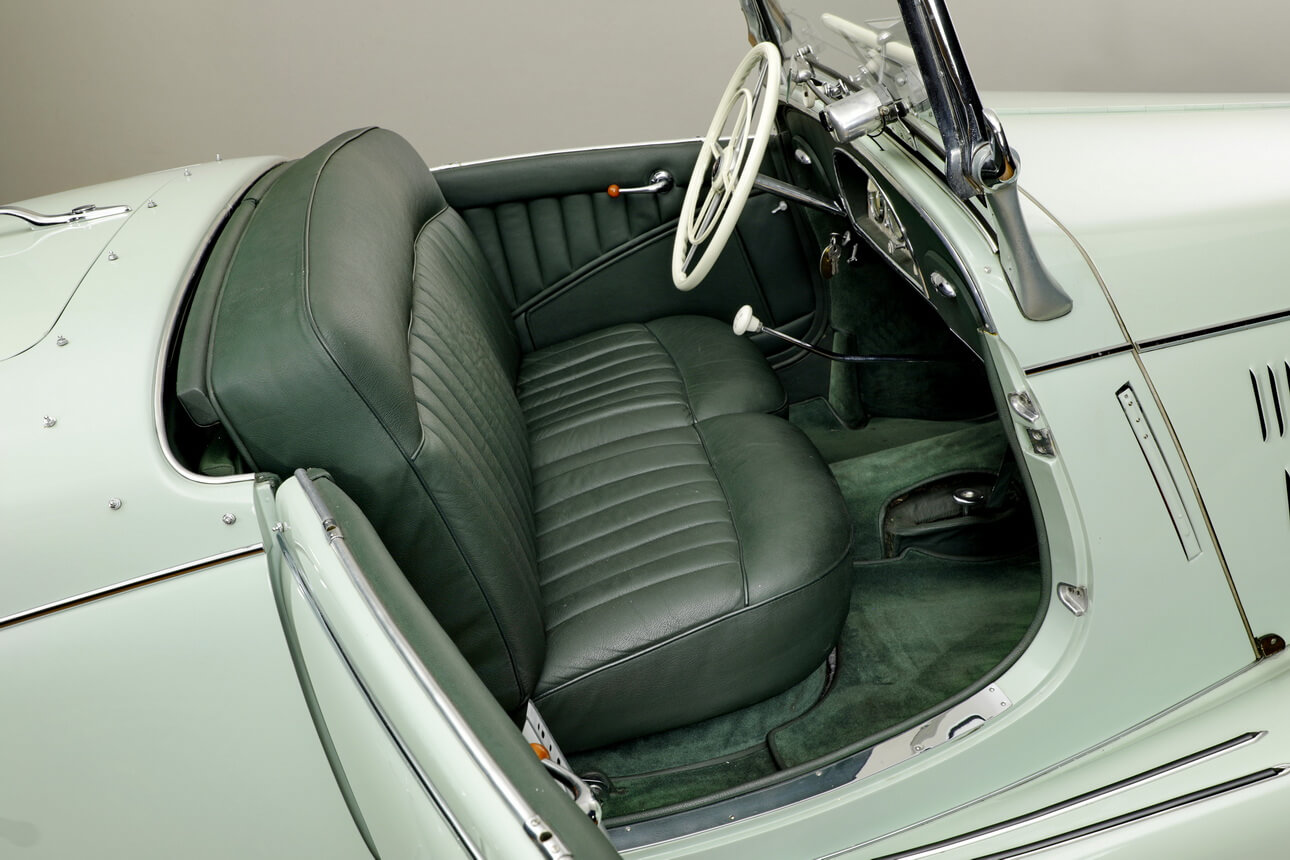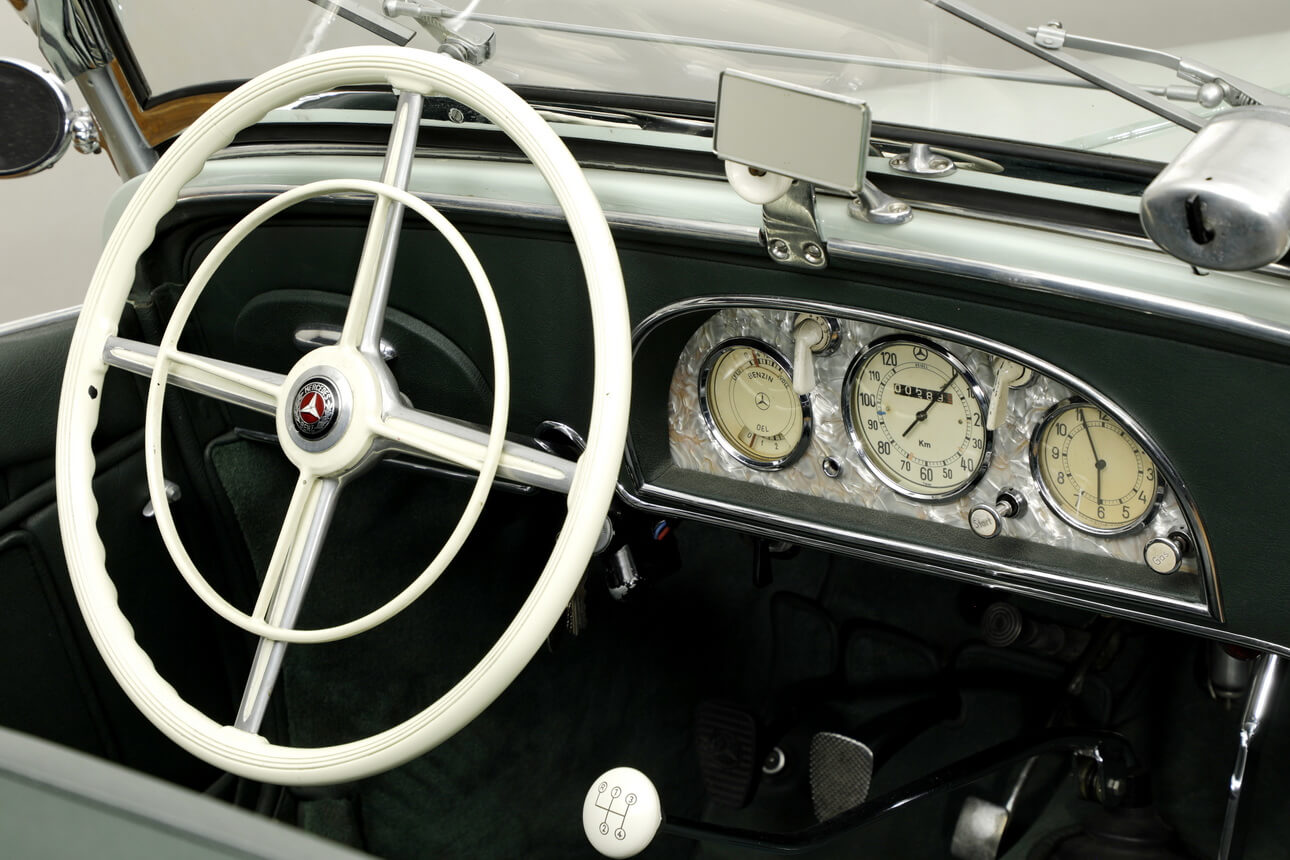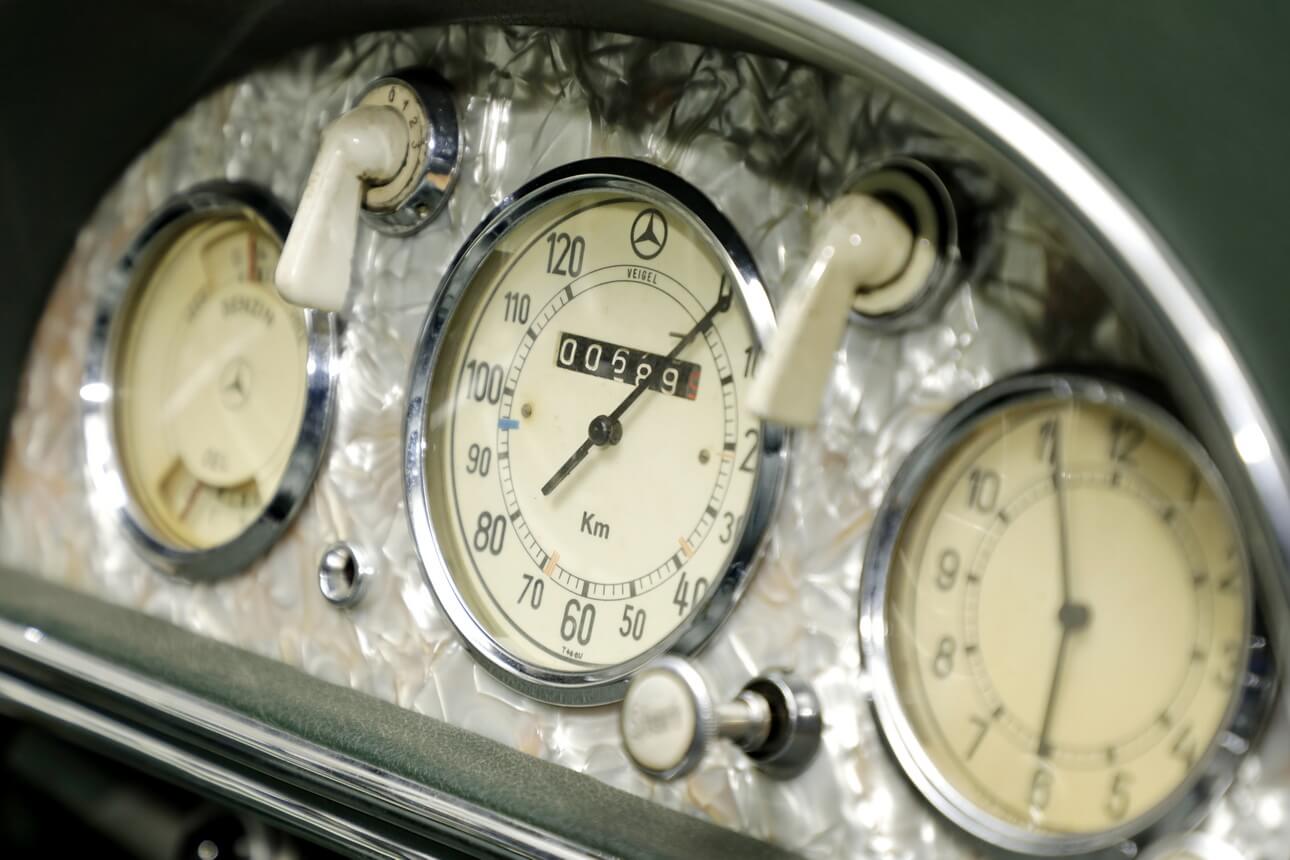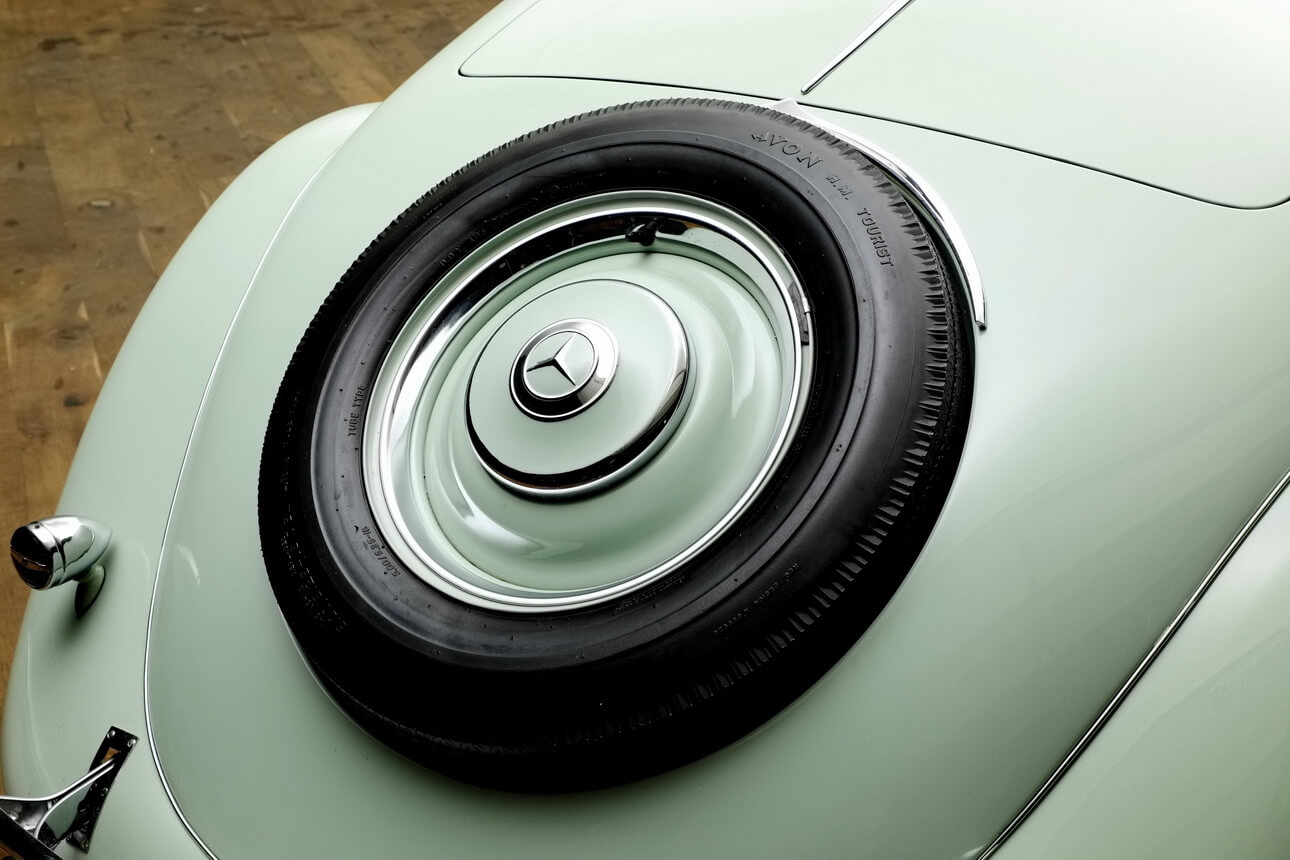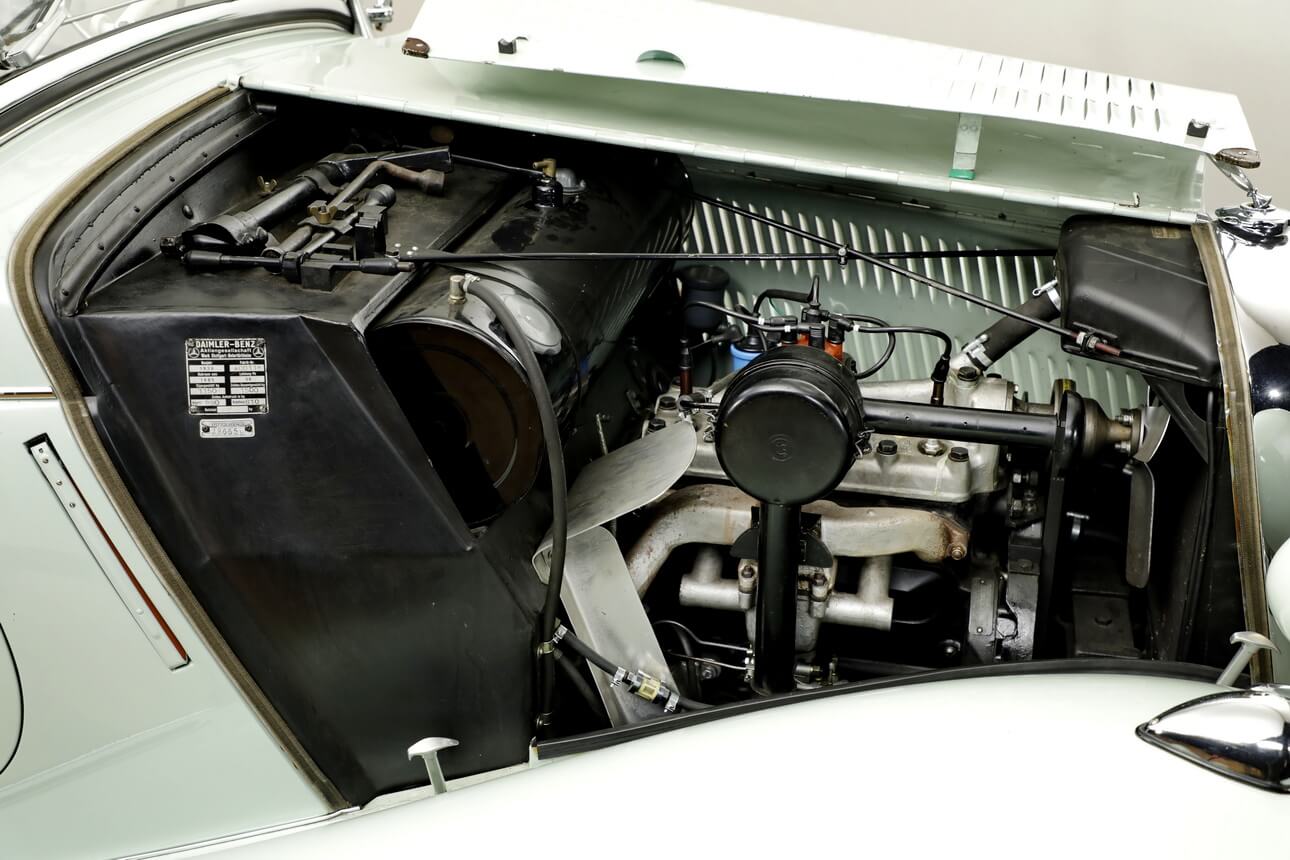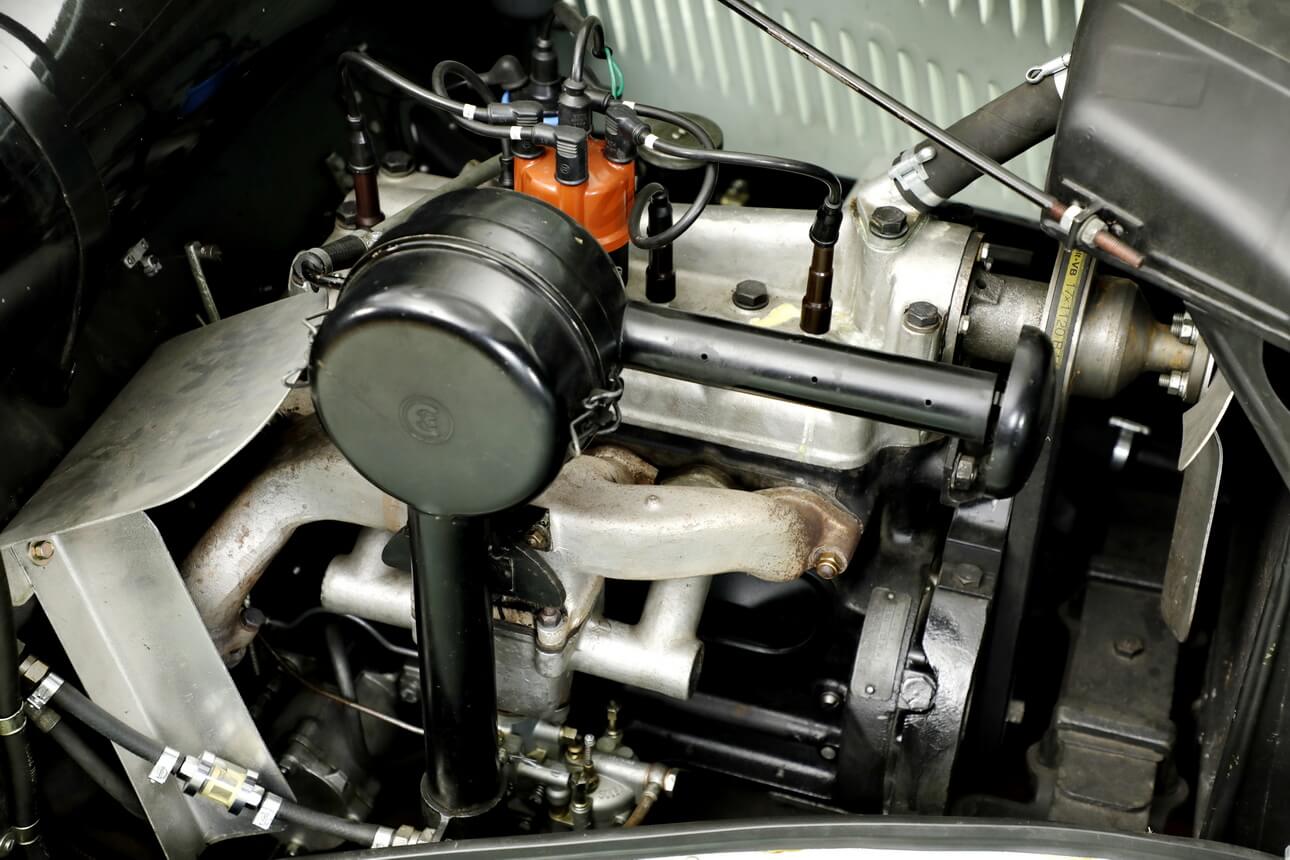Mercedes Benz 170 V Roadster
Highlights
Data & Facts
This Automobile
This Mercedes Benz 170 V Sport Roadster was first registered in Germany in July 1938. Its later German owner in Hamburg (name known), who also had a residence in California, subjected the car to a restoration in the early 1980s, in which around 25,000 DM were invested - at that time already a handsome amount for the preservation of an "old" vehicle. In January 1986, this car then participated with its then owner in the 100th Anniversary Parade of the Automobile in Los Angeles, California, with the participation of Mercedes Benz of North America and the Mercedes Benz Club of America.
A subsequent (last) owner, who owned this car until 2020, had made ongoing investments in restoring the car in various stages over the years. This includes extensive body work and painting (2001/2002), saddlery work in the interior (2002) and an engine overhaul (2006). The invoices for this work are available and total around EUR 65,000. In 2020, further restoration work was carried out on the body. The invoices for about 15,000 EUR are also available. The engine is not identical in number to the first delivery but is a type-correct model of this series.
Overall, this compact car makes a convincing impression with its older restoration, which is very well preserved. It is also a rare rarity, as only 271 examples of the roadster version of were produced. A very exclusive share of the total production of the 170 V passenger car series with about 72,000 vehicles.
Model History
The Mercedes Benz 170 V (W136 series) was introduced in 1936 as the successor to the 170 (W15) at the International Automobile and Motorcycle Exhibition in Berlin (IAMA). The development goal of the 170 V was to offer a cheaper and even more modern car of the middle class than the 170 already was. It was powered by a simpler 1.7-liter inline four-cylinder engine with 38 hp. The "V" in the designation stood for the front-mounted engine to distinguish it from its rear-engine counterpart, the Type 170 H, and to differentiate it from the predecessor 170 with a six-cylinder engine. The engine proved itself through its high reliability and its smooth running. The chassis of the 170 V was a newly designed X-shaped oval tube frame, which was lighter and at the same time more robust than the box frame used until then.
In addition to the numerous two- and four-door sedans produced, as well as vans and the pure chassis for special bodies, there were also the open-top versions Cabriolet sedan, Cabriolet A (two-seater) and B (four-seater), and the roadster. The Cabriolet A and the Roadster looked similar at first glance. In the Roadster, the sloping rear section was slightly longer and allowed for two additional fold-out emergency seats, the so-called "mother-in-law seat", which alternatively served as a luggage compartment.
The soft top of the Cabriolet A rested on the body as usual when unfolded. The Roadster, on the other hand, had an ingenious roof design that completely recessed the soft top into the body (behind the seats). This creates an elegant side line without a disturbing "soft top bulge". In addition, the windshield can be folded down for a particularly sporty character and the ultimate feeling of open-top driving. The body of the Roadster was manufactured at the Daimler-Benz plant in Sindelfingen. The Roadster was by far the most exclusive variant of the 170 V, with only 271 examples built between 1936 and 1942.
This Automobile
This Mercedes Benz 170 V Sport Roadster was first registered in Germany in July 1938. Its later German owner in Hamburg (name known), who also had a residence in California, subjected the car to a restoration in the early 1980s, in which around 25,000 DM were invested - at that time already a handsome amount for the preservation of an "old" vehicle. In January 1986, this car then participated with its then owner in the 100th Anniversary Parade of the Automobile in Los Angeles, California, with the participation of Mercedes Benz of North America and the Mercedes Benz Club of America.
A subsequent (last) owner, who owned this car until 2020, had made ongoing investments in restoring the car in various stages over the years. This includes extensive body work and painting (2001/2002), saddlery work in the interior (2002) and an engine overhaul (2006). The invoices for this work are available and total around EUR 65,000. In 2020, further restoration work was carried out on the body. The invoices for about 15,000 EUR are also available. The engine is not identical in number to the first delivery but is a type-correct model of this series.
Overall, this compact car makes a convincing impression with its older restoration, which is very well preserved. It is also a rare rarity, as only 271 examples of the roadster version of were produced. A very exclusive share of the total production of the 170 V passenger car series with about 72,000 vehicles.
Model History
The Mercedes Benz 170 V (W136 series) was introduced in 1936 as the successor to the 170 (W15) at the International Automobile and Motorcycle Exhibition in Berlin (IAMA). The development goal of the 170 V was to offer a cheaper and even more modern car of the middle class than the 170 already was. It was powered by a simpler 1.7-liter inline four-cylinder engine with 38 hp. The "V" in the designation stood for the front-mounted engine to distinguish it from its rear-engine counterpart, the Type 170 H, and to differentiate it from the predecessor 170 with a six-cylinder engine. The engine proved itself through its high reliability and its smooth running. The chassis of the 170 V was a newly designed X-shaped oval tube frame, which was lighter and at the same time more robust than the box frame used until then.
In addition to the numerous two- and four-door sedans produced, as well as vans and the pure chassis for special bodies, there were also the open-top versions Cabriolet sedan, Cabriolet A (two-seater) and B (four-seater), and the roadster. The Cabriolet A and the Roadster looked similar at first glance. In the Roadster, the sloping rear section was slightly longer and allowed for two additional fold-out emergency seats, the so-called "mother-in-law seat", which alternatively served as a luggage compartment.
The soft top of the Cabriolet A rested on the body as usual when unfolded. The Roadster, on the other hand, had an ingenious roof design that completely recessed the soft top into the body (behind the seats). This creates an elegant side line without a disturbing "soft top bulge". In addition, the windshield can be folded down for a particularly sporty character and the ultimate feeling of open-top driving. The body of the Roadster was manufactured at the Daimler-Benz plant in Sindelfingen. The Roadster was by far the most exclusive variant of the 170 V, with only 271 examples built between 1936 and 1942.
